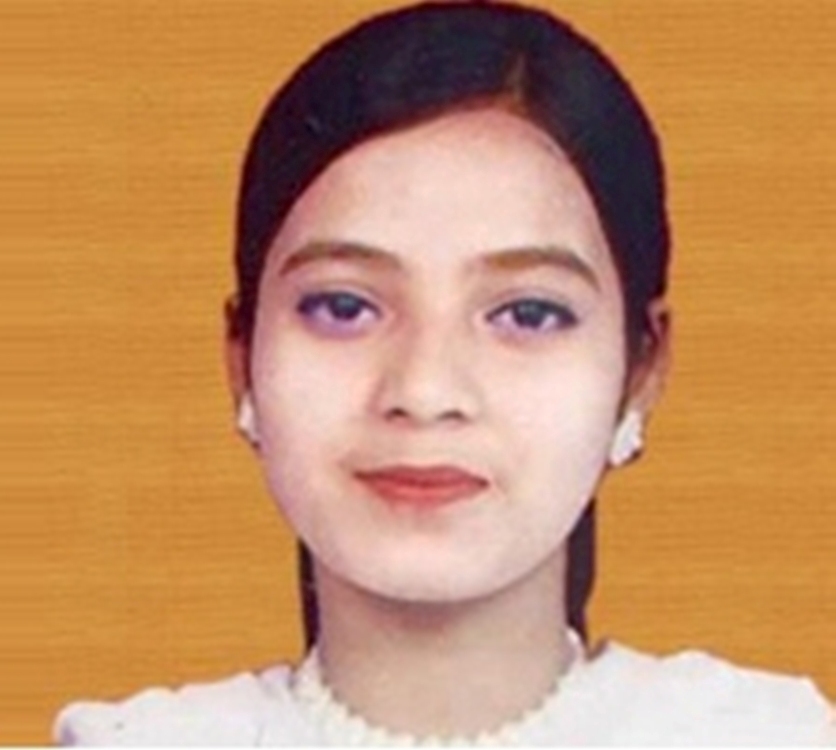All you want to know about Ishrat Jahan case!

Ishrat Jahan and three others were killed in an alleged “fake” encounter by Gujarat police near Ahmedabad on June 15, 2004, on suspicion of being linked to terrorist outfit Lashkar-e-Taiba (LeT) and planning to kill the then chief minister Narendra Modi.
 The ghost of the Ishrat Jahan “fake” encounter case continues to haunt Indian politics even after 12 years.
The ghost of the Ishrat Jahan “fake” encounter case continues to haunt Indian politics even after 12 years.
Ishrat Jahan and three others were killed in an alleged “fake” encounter by Gujarat police near Ahmedabad on June 15, 2004, on suspicion of being linked to terrorist outfit Lashkar-e-Taiba (LeT) and planning to kill the then chief minister Narendra Modi.
The political mud-slinging restarted early February this year after Pakistani-American LeT operative and a prime accused in 26/11 Mumbai attack case, David Headley, in a video deposition before a Mumbai court, confessed that Ishrat was indeed a LeT suicide attacker.
Here is everything that you wanted to know about the Ishrat Jahan case:
1. Full name: Ishrat Jahan Shamim Raza. Age: 19. She was a second year Bachelor of Science (BSc) student of Guru Nanak Khalsa College in Mumbai.
2. Ishrat was originally from Bihar but settled in Thane district of Maharashtra.
3. She was the second among her seven siblings.
4. Ishrat’s father Mohammad Shamim Raza, who was the proprietor of a Mumbai-based construction company, Asian Constructions, died in 2002.
5. Her mother Shamima used to work at a medicine packaging company in Vashi.
6. To support her family, Ishrat used to give tuition to children. Later she met Pranesh Pillai aka Javed Sheikh and started handling his accounts as his secretary. It was Sheikh who took her to Ahmedabad on office work.
7. On June 15, 2004, the Ahmedabad Police shot dead Ishrat Jahan, Javed Sheikh, Amjad Ali Rana and Zeeshan Johar in an alleged encounter.
8. The Detection of Crime Branch (DCB) of the Ahmedabad City Police, who carried out the encounter, claimed the four were Let operatives and had come to assassinate Modi to avenge the death of Muslims in the 2002 communal riots in Gujarat.
9. On September 7, 2009, metropolitan magistrate SP Tamang submitted a report in the Ahmedabad metropolitan court saying Ishrat was not linked to LeT and that she and the three others were allegedly killed in police custody.
10. The Gujarat government challenged the report as “illegal” and “doubtful”.
11. Later a Special Investigation Team (SIT), led by Karnail Singh, was set up to investigate the case further. Teams were sent to Srinagar, Delhi, Lucknow and Nashik to gather proof of Ishrat’s alleged LeT link.
12. On November 21, 2011, the SIT, in its report, told the Gujarat High Court that the Ishrat Jahan encounter was “fake”.
13. The Gujarat High Court ordered to file a complaint under Indian Penal Code (IPC) Section 302 (murder) against those involved in the case.
Among the 20 odd cops accused in the case were the then Deputy Commissioner of Police Dhananjay G. Vanzara and Assistant Commissioner of the Police Crime Branch Girish Laxman Singhal.
14. On February 21, 2013, the Central Bureau of Investigation (CBI) arrested Singhal, who was the Assistant Commissioner of Police, Crime Branch, during the “encounter”, in connection with the case.
Earlier, senior police officers, Tarun Barot, J. G. Parmar, N. K. Amin, Bharat Patel and Anaju Chaudhary were arrested. But all were released as the investigating agency failed to file a chargesheet within 90 days of their arrest.
14. In February 2014, the CBI filed a supplementary chargesheet in the case. Murder and conspiracy charges were slapped against the ex-special director of Intelligence Bureau (IB) Rajinder Kumar, Assistant Director M. K. Sinha, Deputy Superintendent of Police Rajeev Wankhede, and officer T. Mittal.
15. In June 2015, the Centre rejected the CBI’s plea to prosecute the four officers thus the case was virtually closed.
16. On February 13 this year, one of the officers accused in the case, Rajinder Kumar, stoked fresh controversy by saying that he was pressured to frame Modi in the case by a senior Congress leader from Gujarat.
17. On February 27, former home secretary G.K. Pillai said that P. Chidambaram in his capacity as home minister intervened to drop the reference to Ishrat Jahan’s links with Laskar-e-Taiba in the Centre’s affidavit in 2009. Chidambaram refuted the allegation.
18. On March 1 this year, former home ministry official RVS Mani alleged that changes in the second Ishrat Jahan affidavit were made at political level by the then UPA government and he was tortured by Satish Verma,
a Gujarat cadre IPS officer and member of CBI’s special investigation team (SIT) to sign it.
19. On March 4, Verma, now posted in Shillong, refuted the allegation saying that if he had tortured Mani it would be a big misconduct and crime under the law.
As a senior officer Mani must be aware of the fact that he could take legal action against him, Verma told the media.
Verma also said Ishrat Jahan and three others were killed in a fake encounter and the Intelligence Bureau (IB) had been involved in the entire incident.
Big Wire






































